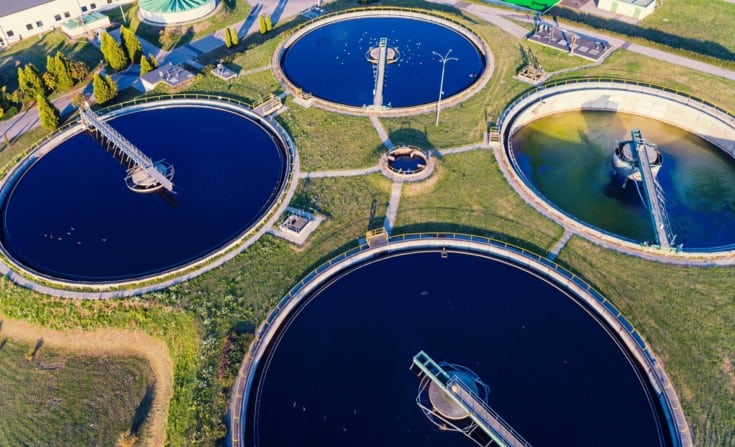
Most people think as little as possible about the wastewater that is produced daily from their showers, bathtubs, sinks, dishwashers and toilets. But with the right techniques, it can become a valuable resource.
On average, every Americans uses about 60 gallons of water per day (PDF) for purposes that include flushing toilets, showering and doing laundry. This figure can easily double if outdoor uses, such as watering lawns and filling swimming pools, are also included.
Most of the used water eventually will become wastewater that must be treated before it can be discharged into nature. And that treatment uses a lot of energy. According to the U.S. Environmental Protection Agency, water and wastewater facilities account for more than a third of municipal energy budgets (PDF).
My research focuses on recovering resources from wastewater. This process is difficult because wastewater contains many types of contaminants. But researchers in our fields are exploring many creative ways to make valuable products from them.

Energy from organic materials
Diehard wastewater engineers understand the value of wastewater, which they view as an asset rather than a waste. That’s why some of them call it “used water” instead, and refer to what most people call wastewater treatment plants as water resource recovery facilities.
In fact, wastewater can contain more than three times the amount of energy needed to treat it. One simple and mature technique for recovering part of this energy is anaerobic digestion, a natural process in which microorganisms feed on grease and other organic materials in wastewater and produce biogas, just as yeast can eat up barley and spit out beer. Biogas contains roughly 50 percent methane, which can be used as a renewable fuel for boilers, furnaces and heating systems or to turn turbines and generate electricity.
More advanced techniques, such as hydrothermal processes, take sewage sludge — the solids removed from wastewater during treatment — and convert it into biobased fuels that can be used to replace gasoline and diesel fuel. This process is at the demonstration stage.
In additional to sewage sludge, many researchers — including me — are very interested in microalgae. Microalgae are promising feedstocks for biofuels (PDF), and some can grow in wastewater. My colleagues and I have designed hydrothermal systems to turn wastewater-grown microalgae into biofuels. They are still being tested in the lab, but we hope to scale them up in the near future.
Mining nutrients from wastewater
Wastewater also contains nutrients such as nitrogen and phosphorus, essential elements that plants need to grow. In current wastewater treatment processes, we use energy to convert ammonia in the wastewater, which comes mostly from urine, into nitrogen gas. However, industries then use large quantities of natural gas to convert nitrogen gas back into ammonia, predominantly for producing fertilizer, through the Haber-Bosch process.
Clearly, it would be much more efficient to directly extract the ammonia from wastewater without converting it. One way is to use urine-diverting toilets, which already are commercially available, to separate urine from other sources of wastewater. Then the collected urine could be used as fertilizer after sanitizing it to remove pathogens.
Sanitized urine also contains other nutrients such as phosphorus and potassium. The Rich Earth Institute, a Vermont-based nonprofit supported by federal agencies and foundations, is researching ways to turn human urine into fertilizer. The institute is testing harvested urine on real crops, and has found that it works effectively.
Using pasteurized urine as fertilizer reduces waste and resource extraction.
Alternatively, we can recover these nutrients as struvite, or magnesium ammonium phosphate, a mineral that contains magnesium, nitrogen and phosphorus. Struvite can naturally form during wastewater treatment processes, but tends to deposit in tanks and pipes and will damage the equipment if left unattended. By controlling the formation of struvite, it can be recovered in separate reactors.
Researchers have tested recovered struvite on crops in laboratories and achieved yields comparable to commercial fertilizers. The technique is still maturing, but companies are developing commercial versions for wastewater treatment plants.
More possibilities
Want more valuable stuff? Wastewater is literally a gold mine. It contains metals valued up to millions of U.S. dollars per year. These metals are often toxic to aquatic life, so they need to be removed. But conventional removal technologies require a lot of energy and produce toxic sludge.
Researchers are developing new ways to remove and reuse these metals, including membrane systems that selectively can remove precious metals from water and biosystems that use microorganisms to recover them. These techniques are at a very early stage and it is not clear yet whether they will make economic sense, but they have the potential to make wastewater more valuable.
In addition, wastewater is generally warmer than natural water supplies, especially in the winter, so it can serve as a heat source. This technique is well-established and is not limited to commercial scale. You can install drain-water heat recovery systems at home to lower your energy bill.
To me, this is just a beginning. With proper techniques, “wastewater” can offer us much more — and I very much look forward to the day when there is no “wastewater,” just “used water.”
